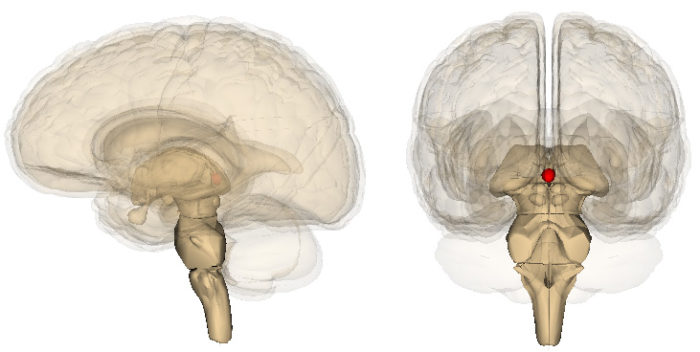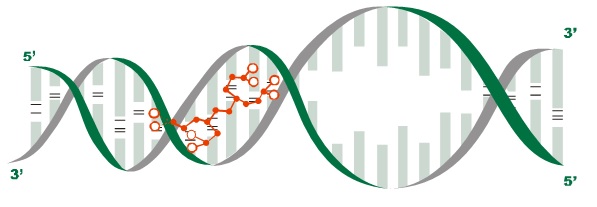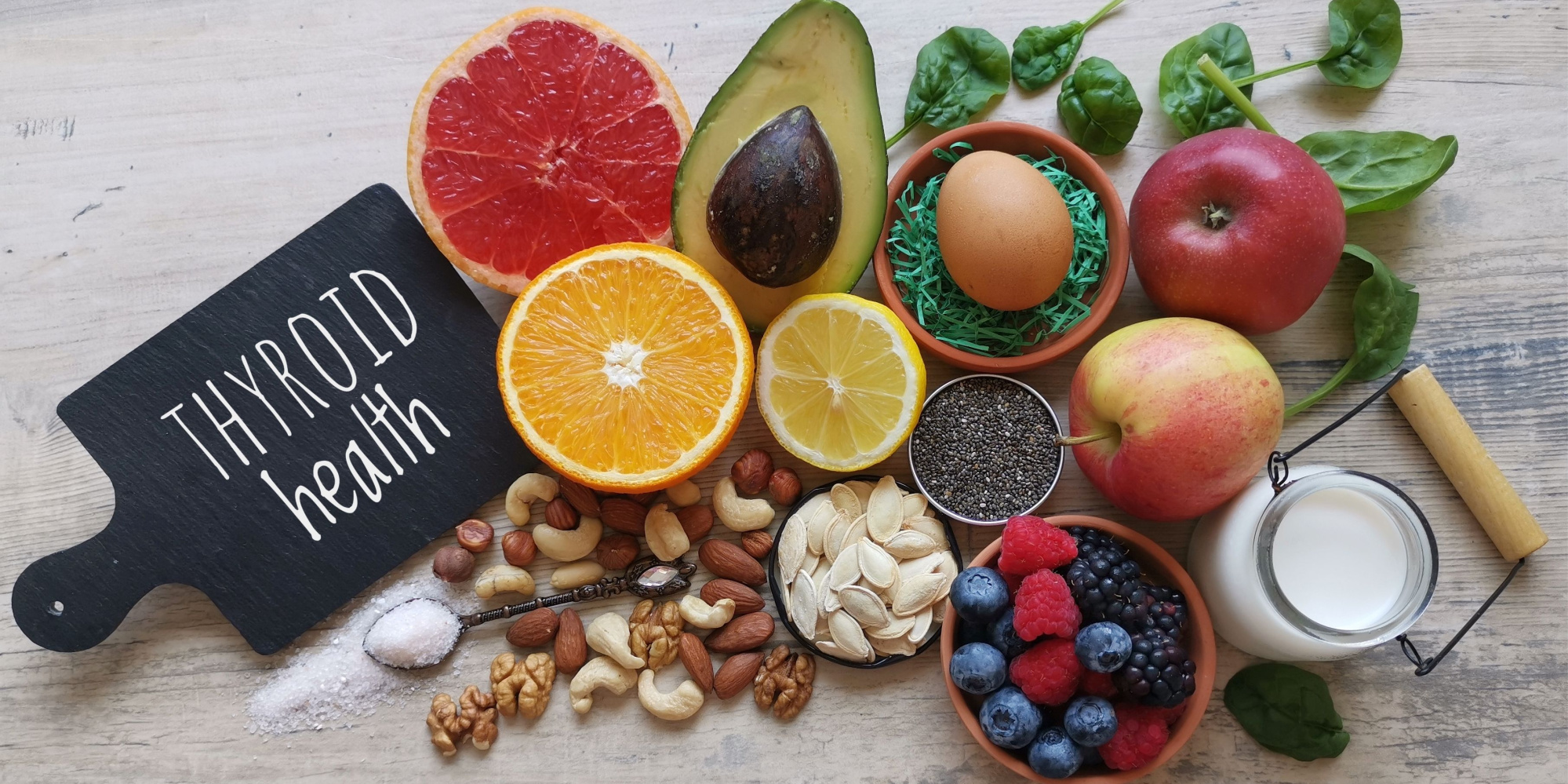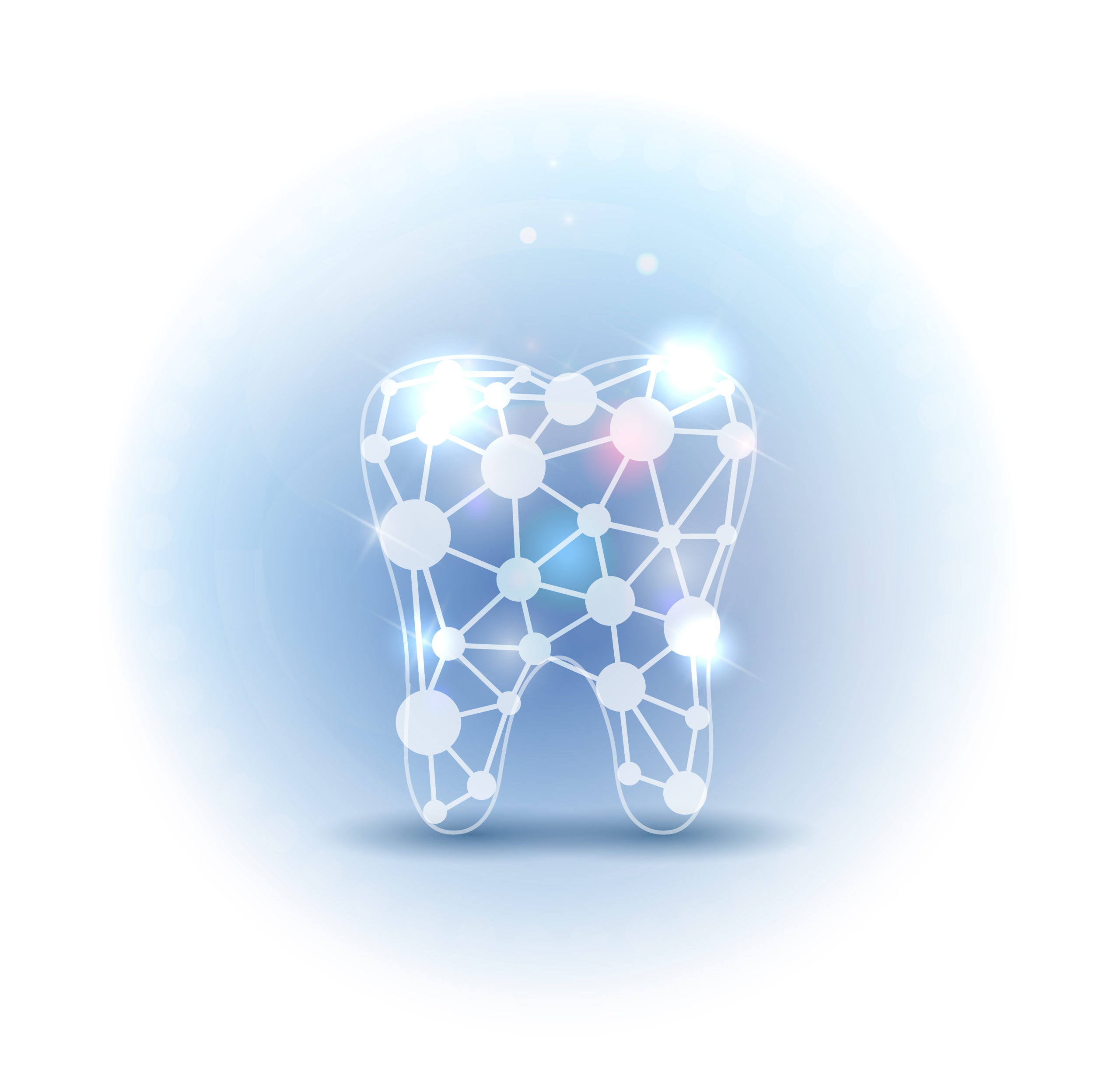
The power of the pineal peptide
November 28th, 2016The power of the pineal peptide
By Leslie J. Farer
Back in the 1980’s, a colonel in the Soviet army Medical Corps was assigned a seemingly impossible, though intriguing task: to come up with a way to protect troops against the risks of modern military weapons, (such as a blinding battlefield laser or radiation exposure) while at the same time regenerate damaged organs and tissues in the event of injury.
What he discovered, through experiments supported by the generous funding of the Soviet military, was that certain naturally-produced substances, later termed ‘peptide bioregulators,’ (that were isolated from various animal tissues and organs), have the capacity to act at the genetic level to regenerate tissue and restore the function of the corresponding organ(s) in other animals or in humans.
As a byproduct of their rejuvenating properties, these biologically active short chains of amino acids were also discovered to act as so-called ‘geroprotectors’ (therapeutics that target the root causes of aging and age-related diseases), with impressive longevity-promoting potential.
Once a military secret in the 1980’s, a wealth of subsequently-published research has demonstrated that peptide bioregulators restore physiological balance, prevent age-related diseases, increase life span and more. One in particular, the pineal bioregulator peptide called Epithalamin, is considered to be the most promising in its class of geroprotectors.
Let’s first examine the properties and actions of peptide bioregulators in general, and then the particular benefits of pineal peptide Epithalamin, in stemming the onset of aging and age-related diseases.
Each peptide restores the function of a specific organ
In the early days of his research, the then Soviet colonel, Dr. Vladimir Khavinson, (who is currently the president of the International Association of Gerontology and Geriatrics and Head of the St. Petersburg Institute of Bioregulation and Gerontology), developed a method for the isolation, purification and fractionation of low-molecular-weight peptides from extracts of different bovine-sourced organs and tissues such as the pineal gland, thymus, hypothalamus, retina, endocrine glands and liver etc.
These amino-acid chains are endogenously produced in the cells of healthy tissues and play a regulatory role, from the molecular and cellular levels to the overall biochemical and physiological functioning of the particular organ in which they are manufactured (hence, the designation ‘peptide bioregulator’).
Professor Khavinson analyzed over 15,000 genes in mouse heart and brain tissue before and after the injection of various peptide extracts, (including the pineal peptide Epithalamin) and identified the mechanism of ‘peptide regulation of genetic activity’ whereby each peptide interacts with DNA, transferring information encoded in its amino acid sequence to regulate particular genes in a particular tissue. (1,2)
Activation of these genes stimulates protein synthesis, (1,3,4) and the manufacture of proteins according to the encoded genetic information, (a crucial physiological process which we’ll examine further below). Short-chain peptides also have the capacity to induce cell proliferation and differentiation, (1,2,4) resulting in tissue repair and restoration of organ function.
When Professor Khavinson administered peptide extracts to animals (and later humans), he found that they did indeed stimulate protein synthesis and produced regenerative effects in cells and tissues of the organ from which the particular peptide had originally been derived. (2) For example, retinal peptides (example, Visoluten®) initiate the formation of retinal and pigment cells in patients with retinal degeneration, (1,2) thymic peptides stimulate immunity, (1,5) and pineal peptides induce the aging pineal gland to manufacture melatonin. (1,5)
Trials using peptide preparations obtained from other organs (i.e., prostate, cerebral cortex, adrenal gland, liver, etc.) have all demonstrated beneficial effects as evidenced by improvements in the condition of the respective organ. (5) Amazingly, peptides isolated from organs of young animals were shown to trigger protein synthesis and restore even the function of aging, deteriorating organs in old animals! (1) ─ It’s a glimpse into the peptide bioregulator antiaging potential.
Peptides interact with Genes’ DNA to activate protein synthesis
The molecular model Professor Khavinson proposed, which was later demonstrated experimentally, involves ‘complementary binding’ or complexing of the amino acid sequence of a short-chain peptide with the nucleotide sequence on a gene’s DNA. (1,6,7)
DNA is a long polymer chain composed of repeating units called nucleotides which, by their combination of nitrogen bases, create a ‘code’ or blueprint for the manufacture of proteins; each ‘code’ is specific for one of thousands of different proteins. The formation of the peptide-DNA complex causes a weakening of bonds holding together the DNA double helix and stimulates the splitting of the two strands, (1,6) a precursor necessary for gene transcription, (the conversion of the gene’s ‘code’ into protein-synthetic information) that ultimately results in the manufacture of a protein, (see Figure 1).

Figure 1: The local separation of strands due to the peptide Epithalon® (Ala-Glu-Asp-Gly) binding in DNA double helix. Peptide bioregulators act as gene switches triggering protein synthesis.
Protein synthesis is a complex manufacturing process indispensable to life, producing such crucial substances as enzymes, structural proteins such as collagen and hormones- such as insulin, antibodies and hemoglobin. We’ll see below specific examples of the ability of the pineal peptide- Epithalamin to ‘switch on’ genes to synthesize these essential substances to provide overall restorative effects.
Countering peptide deficiencies associated with aging
In a nutshell, the main point to digest here is that these biologically-active peptides act at the genetic level and possess the ability to recover functions of tissues and organs undergoing age-related deterioration.
Aging is characterized by a peptide-dependent downward spiral: changes in gene expression accompanied by decreased endogenous peptide production lead to disorders in protein synthesis, in turn causing structural and functional deterioration of various organs (pineal gland, liver, pancreas, thymus, retina, nervous, immune and endocrine systems) that result in aging, and age-related diseases. (1,2,4,5,6,8) Thankfully, this negative cascade can be ameliorated, or even reversed, through the delivery of the appropriate peptide(s) which have been shown to exhibit geroprotective, or antiaging properties. (Professor Khavinson refers to the process of peptide administration to animals or humans the ‘epigenetic regulation of aging.’ (6)
Studies on the pineal peptide show multifaceted regenerative effects
In the late 1990’s Professor Khavinson began manufacturing bioregulators synthetically, based upon the amino acid composition of peptide extracts isolated from animal tissues. These laboratory-formulated peptides, consisting of two to four amino acids, were shown to possess equivalent biological activity and safety to the animal-derived extracts. (1-3) Epithalamin is expressed as Epithalon®, a synthetic tetrapeptide- Ala-Glu-Asp-Gly (alanine-glutamic acid-aspartic acid-glycine), modeled on the amino acid sequence of Epithalamin, a polypeptide complex isolated from the bovine pineal gland and also as Endoluten®, (see table 1 for explanation).
Epithalamin been shown to regulate pineal gland function and increase melatonin production, improve immunological parameters, stimulate antioxidant and anti-cancer defenses, restore reproductive function, increase lifespan in animals and provide geroprotective effects in humans. (5)
| Names given to the pineal peptide: |
| Original Synthetic version (injections only) Oral/bovine version |
| Epithalamin Epithalon® Endoluten® |
Table 1: The peptide names change on whether the peptide is synthetically produced or extracted from a bovine source. This table explains the situation in regard to the pineal peptide.
Epithalamin has been shown to act on the pineal gland to restore youthful melatonin production, (figure 2) but has many other restorative effects on age-related endocrine dysfunction. For example, in aging rhesus monkeys receiving Epithalon® injections, night-time melatonin production increased and the normal daily pattern of cortisol secretion was restored, for an overall normalizing effect on circadian rhythms. (8) In another experiment on old rhesus monkeys, Epithalon® administration decreased glucose and insulin levels (both of which typically rise with age due to altered function of the pancreas) and as in the previous trial, increased night melatonin levels. (9)
| Age, years | Investigation** | 6-OHMS excretion (ng/h) | ||
| Peptide Preparation | ||||
| Epithalamin | Epitalon® | Endoluten® | ||
| 60-65
|
Initial value | 410 ± 38
(n=21) |
445 ± 43
(n=19) |
428 ± 47
(n=17) |
| After treatment | 933 ± 86 * | 915 ± 97 * | 820 ± 92 * | |
| 75-80
|
Initial value | 363 ± 41
(n=18) |
371 ± 35
(n=22) |
348 ± 43
(n=21) |
| After treatment | 690 ± 63 * | 615 ± 71 * | 580 ± 62 * | |
Figure 2: This figure highlights that all forms of the pineal peptide, whether administered by injection, or orally, increases human melatonin production, as measured in blood. Data on file: Laboratory of Biogerontology of the St. Petersburg Institute of Bioregulation and Gerontology
Interestingly, Epithalamin also has positive effects on vision: it protects the functional integrity of the retina in rats (10) and improves visual function in patients with retinal degeneration in an impressive 90% of cases! (5,11) The restorative effects on both the pineal gland and retina probably reflect the common embryological origin of the two structures.
Epithalamin also has positive effects on the age-related decline of the immune system by activating the proliferation of lymphocytes (a type of white blood cell) in the thymus. (12) It has also been shown to complex with the nucleotide sequence of the interferon gamma gene, activating interferon gamma production. (12) This is an excellent example of the molecular model of peptide-DNA bonding we reviewed earlier that results in the manufacture of a critical protein- in this case, interferon gamma, which is a cytokine, or chemical messenger, involved in the regulation of nearly all phases of immune and inflammatory responses.
Several trials have demonstrated the anti-carcinogenic effects of Epithalamin in countering genetic mutations and the development of malignant tumors. For example, Epithalon® treatment decreased the incidence of chromosome aberrations which can lead to tumors in senescence-accelerated mice, (mice which are bred as models of rapid aging), (13) and suppressed breast cancer in mice (14) and colon cancer in rats. (15)
The pineal peptide extends telomere length
Perhaps even more compelling, Epithalamin activates the telomerase gene and lengthens telomeres ─ (see figure 3) further evidence of its longevity-promoting potential.
Aging is associated with a decrease in the proliferative capacity of cells (i.e., the ability of cells to divide, necessary for the construction and repair of tissues) due to the progressive shortening of structures called telomeres. Telomeres are the protective ‘caps’ at the ends of chromosomes that maintain their structural integrity and telomerase is an enzyme that adds repetitive DNA sequences to the telomeric ends of chromosomes each time a cell divides (during cell division, portions of DNA are lost due to an inherent problem of incomplete end-replication; telomerase ensures the complete copying of DNA repeats).
Most of the body’s cells (excluding reproductive cells) can divide only a finite number of times according to a programmed genetic clock that results in decreased telomerase production with increasing age, leading to shortened telomeres and arrested cell division. This process, known as replicative senescence, ultimately leads to aging and age-related diseases.
Khavinson found that the addition of Epithalamin to cultured human cells activated the telomerase gene to synthesize telomerase, resulting in lengthened telomeres and an increased number of cell divisions. (16, 17) This is another example of the molecular mechanism of peptide-DNA complexing which results in the synthesis of a protein, in this case the ‘immortalizing’ enzyme telomerase. According to Professor Khavinson; “these results indicate the possibility of prolonging the life span of a cell population and of the whole organism” (16) ─ an intriguing and exciting prospect.
All of these mechanisms – normalization of endocrine function, immune enhancement, cancer inhibition and telomerase activation – underlie the pineal peptide’s pronounced geroprotective, or antiaging effects. Studies specifically on longevity demonstrate increased life span in drosophila, (2,5) mice, (5) and rats (16) when administered Epithalamin and it follows that this effect is mimicked in humans. Undoubtedly, the peptide bioregulator is one of the most innovative and effective antiaging therapies developed in the past few decades. We can now take advantage of these fascinating physiologically-active short peptides ─ including the pineal version ─ to rejuvenate age-damaged organs and extend the quality and quantity of our senior years.
The influence of pineal gland preparations on telomere length in patients’ blood cells
| Age, years | Investigation | Telomere length (b.p.) | |||
| Peptide Preparations | |||||
| Epithalamin | Epitalon® | Endoluten® | |||
| 60-65
|
Initial value | 9,32 ± 0,82
(n=25) |
9,61 ± 0,93
(n=19) |
9,43 ± 1,12
(n=21) |
|
| After treatment | 10,83 ± 1,12 * | 10,72 ± 1,21 * | 10,62 ± 1,32 * | ||
| 75-80
|
Initial value | 7,33 ± 0,81
(n=21) |
7,51 ± 0,91
(n=17) |
7,63 ± 0,98
(n=18) |
|
| After treatment | 8,73 ± 0,78 * | 8,91 ± 1,11 * | 8,66 ± 1,21 * | ||
* – p< 0,05 as compared to initial value
Figure 3: Professor Khavinson’s experiments show that all versions of the pineal peptide extend telomere length. These are blood samples taken from patients from the age of 60 to 80. Data on file: Laboratory of Biogerontology of the St. Petersburg Institute of Bioregulation and Gerontology.
References
- Anisimov V.N., Khavinson V.Kh. Peptide bioregulation of aging: results and prospects. Biogerontology. 2010;11:139-149.
- Khavinson V.Kh., Anisimov V.N. Peptide Regulation of Aging: 35-Year Research Experience. Bulletin of Experimental Biology and Medicine. 2009;148:94-98.
- Khavinson V.Kh., Kuznik B.I., Ryzhak G.A. Peptide Bioregulators: A New Class of Geroprotectors. Message 1: Results of Experimental Studies. Advances in Gerontology. 2013;3(3):225-235.
- Khavinson V.Kh., Lin’kova N.S., Trofimov A.V., Polyakova V.O., Sevost’yanova N.N., Kvetnoy I.M. Morphofunctional Fundamentals for Peptide Regulation of Aging. Biology Bulletin Reviews. 2011;1(4):390-394.
- Khavinson VKh. Peptides and Ageing. Neuro Endocrinol Lett. 2002;23 Suppl 3:11-144.
- Khavinson V.Kh., Solov’ev A.Yu., Zhilinskii D.V., Shataeva L.K., Vanyushin B.F. Epigenetic Aspects of Peptide-Mediated Regulation of Aging. Advances in Gerontology. 2012;2(4):277-286.
- Khavinson V.Kh., Tarnovskaya S.I., Linkova N.S., Pronyaeva V.E., Shataeva L.K., Yakutseni P.P. Short Cell-Penetrating Peptides: A Model of Interactions with Gene Promoter Sites. Bulletin of Experimental Biology and Medicine. 2013;154(3):403-408.
- Goncharova N.D., Lapin B.A., Khavinson V.Kh. Age-Associated Endocrine Dysfunctions and Approaches to Their Correction. Bulletin of Experimental Biology and Medicine. 2002;134(5):417-421.
- Goncharova N.D., Vengerin A.A., Khavinson V.Kh., Lapin B.A. Pineal peptides restore the age-related disturbances in hormonal functions of the pineal gland and the pancreas. Experimental Gerontology. 2005;40:51-57.
- Khavinson V.Kh., Razumovsky M.I., Trofimova S.V., Razumovskaya A.M. Retinoprotective Effect of Epithalon in Campbell Rats of Various Ages. Bulletin of Experimental Biology and Medicine.2003;135(5):495-498.
- Khavinson V., Razumovsky M., Trofimova S., Grigorian R., Razumovskaya A. Pineal-regulating tetrapeptide epitalon improves eye retina condition in retinitis pigmentosa. Neuroendocrinology Letters. 2002; 23(4):365-368.
- Lin’kova N.S., Kuznik B.I., Khavinson V.Kh. The Peptide Ala-Glu-Asp-Gly and Interferon Gamma: Their Role in Immune Response during Aging. Advances in Gerontology. 2013;3(2):124-128.
- Rosenfeld S.V., Togo E.F., Mikheev V.S., et al. Effect of Epithalon on the Incidence of Chromosome Aberrations in Senescence-Accelerated Mice. Bulletin of Experimental Biology and Medicine. 2002;133(3):274-276.
- Khavinson V.Kh., Anisimov V.N. Peptide Regulation of Aging: 35-Year Research Experience. Bulletin of Experimental Biology and Medicine. 2009.148:94-98.
- Kossoy G., Zandbank J., Tendler E., et al. Epitalon and colon carcinogenesis in rats: Proliferative activity and apoptosis in colon tumors and mucosa. International Journal of Molecular Medicine. 2003;12(4): 473-477.
- Khavinson V.Kh., Bondarev I.E., Butyugov A.A. Epithalon Peptide Induces Telomerase Activity and Telomere Elongation in Human Somatic Cells. Bulletin of Experimental Biology and Medicine. 2003;135(6):590-592.
- Khavinson V.Kh, Bondarev I.E, Butyugov A.A., Smirnova T.D. Peptide Promotes Overcoming of the Division Limit in Human Somatic Cell. Bulletin of Experimental Biology and Medicine. 2004;137(5):613-616.









